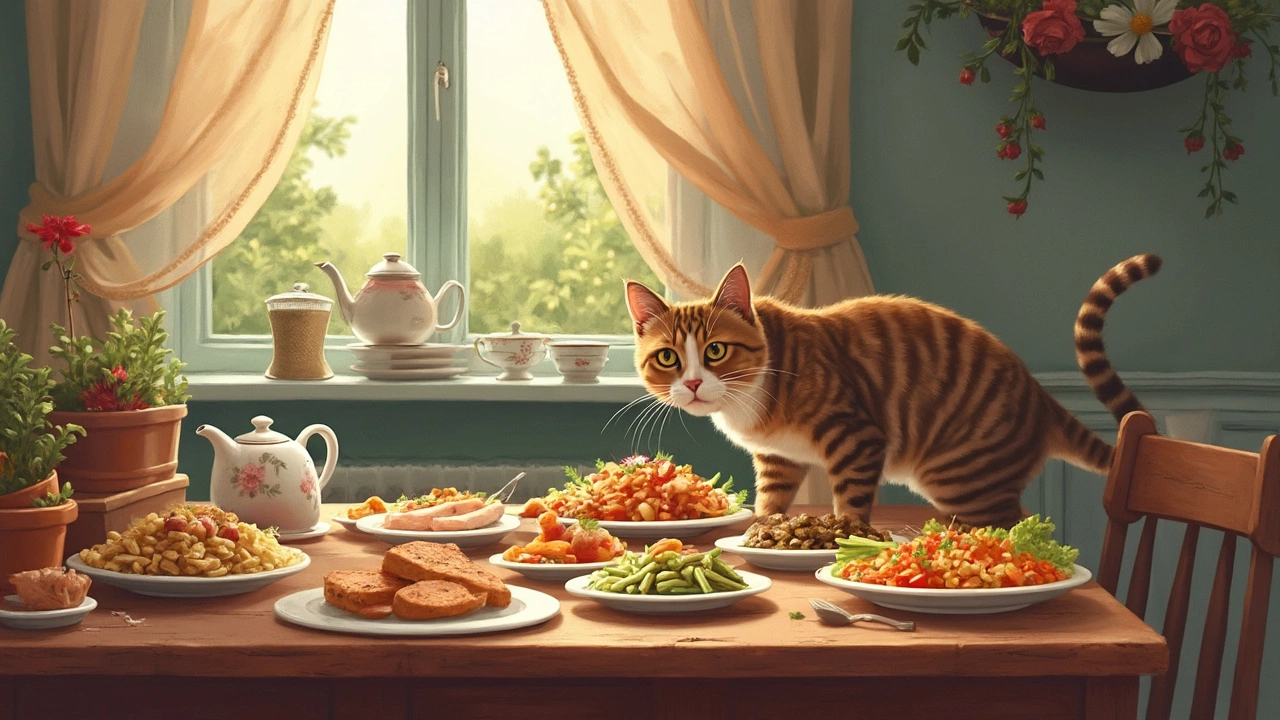Cat Diet Guide: Simple Tips for Feeding Your Feline Right
Feeding a cat might seem easy – just open a bag and pour. But the truth is, a good cat diet involves more thought. The right food keeps your kitty energetic, maintains a shiny coat, and helps avoid costly vet trips. Below you’ll get clear advice on what to choose, how often to serve meals, and what to steer clear of.
What Should You Feed Your Cat?
First, think about the type of food. Most owners use a mix of dry kibble and wet canned meals. Dry food is convenient and can stay out for a while, but it often contains fillers that add calories without nutrition. Look for dry kibble with real meat listed first and minimal corn or wheat.
Wet food, on the other hand, offers higher moisture which is great for kidney health. Choose cans that list a quality protein source and have fewer artificial flavours. If you prefer a raw diet, make sure it’s balanced with the right vitamins – otherwise you risk deficiencies.
One common mistake is ignoring hidden dangers in dry cat food. Some brands add cheap meat meals, excessive salts, or artificial dyes. These ingredients can irritate a cat’s stomach and contribute to weight gain. When reading a label, avoid terms like “by‑product meal” and watch for high levels of grain fillers.
How Often Should Cats Eat?
Unlike dogs, cats are natural grazers. Most indoor cats do well with two meals a day – one in the morning and one in the evening. This schedule matches their hunting instincts and helps keep blood sugar steady.
If you’re using free feeding – leaving dry food out all day – monitor how much your cat actually eats. Some cats overeat, leading to obesity, while others nibble only a little and still get enough calories from wet meals. A practical approach is to measure portions based on your cat’s weight and activity level, then split the total into two feeds.
For kittens or senior cats, the timing changes. Kittens need three to four small meals because they grow fast. Older cats may prefer softer food and smaller portions more frequently if they have dental issues.
To keep feeding simple, set a daily routine: scoop a measured amount of dry kibble into a bowl for the morning, then serve a measured portion of wet food in the evening. Adjust portions if you notice weight changes – a quick weigh‑in each month helps you stay on track.
Lastly, think about treats. Treats should be no more than 10% of daily calories. Use them for training or as a small reward, not as a snack between meals.
By choosing high‑quality food, avoiding harmful ingredients, and sticking to a consistent feeding schedule, you give your cat the best chance at a long, healthy life. Keep an eye on weight, coat condition, and energy levels – they’ll tell you if the diet is working. Happy feeding!
Posted By Bryndle Redding On 8 Feb 2025 Comments (0)
Do Cats Get Bored of Eating the Same Food Every Day?
Cats may develop boredom with their daily diet if fed the same food every day, which can affect their health and behavior. While some cats are creatures of habit, others enjoy a bit of variety in their meals. Understanding your cat's dietary needs and habits is crucial for maintaining its health. There are ways to keep mealtime interesting without upsetting their sensitive tummies. Explore practical tips to ensure your feline friend's meals are both enjoyable and nutritious.
READ MOREPosted By Bryndle Redding On 24 Dec 2024 Comments (0)
How Often Should You Feed Your Cat: Best Practices and Tips
Deciding the right feeding schedule for a cat is crucial as it influences their health and happiness. This article explores ideal feeding frequencies depending on a cat's age, health, and lifestyle, with insights into portion size and meal timing. Understand the differences between feeding kittens and adult cats, and learn the importance of a balanced diet. Discover practical tips for managing feeding routines for both indoor and outdoor cats.
READ MORE
